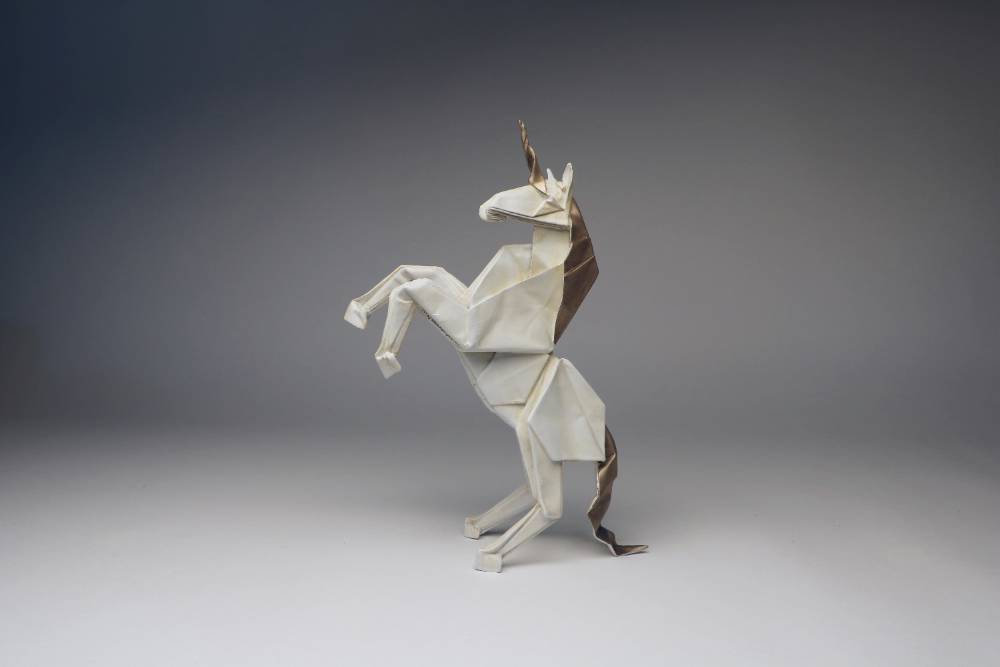Chaffey College "Math and Art" Exhibition to Open Jan. 8 at Wignall Museum

Equations and engineering may not be the first concepts people associate with origami, but that’s exactly what Chaffey College’s new “Seeing the Unseen: Math and Art” exhibition will do.
The exhibition – featuring the work of 15 artists – opens Jan. 8 and continues through March 9 at the Wignall Museum of Contemporary Art. Artwork includes the steel 3D printed sculptures of Bathsheba Grossman, as well as a visual exploration of non-Euclidean geometry from “3-Dimensional.Space” a group of physics and mathematics professors.
“All of the artists either have formal training in math or they have an active interest in math as artists,” said Roman Stollenwerk, assistant curator for the museum. “The common link is that they are all actively engaging with math in their work.”
Altadena physicist Robert J. Lang, considered a leading master of the art of origami, will present several artworks including “One in a Billion,” painted cast bronze in the shape of an origami unicorn. He collaborated with sculptor Kevin Box, a master at casting paper origami in metal.
“Much of his work is so complex that he actually uses math to determine where to score the fold lines,” Stollenwerk said.
The exhibition is a continuation of Chaffey College’s “Seeing the Unseen” series, which combines science, technology, engineering and mathematics (STEM) with art. Numerous workshops will be included alongside the exhibition, covering subjects such as how crocheting relates to math, how NASA and JPL use origami to explore the universe, and more.
Chaffey College math professors Morgan Rea and Hannah Seidler-Wright first approached the Wignall Museum with the idea to combine math and art prior to the pandemic. STEM professors plan to incorporate the exhibition into their lessons to show students how their concepts apply to other disciplines.
“Having students make those unseen connections visible and explicit will help them gain confidence in any discipline and will hopefully help them appreciate and get excited about math in ways they had not before,” Seidler-Wright said.
Rea said that she and Seidler-Wright wanted to break down the idea that mathematicians and scientists can’t be artists.
“Creativity is absolutely necessary for mathematics and the sciences and there are so many mathematical properties at play in the arts, even if they aren’t obvious,” she said.
The exhibition is free and open to the public Monday through Thursday from 10 a.m. to 4 p.m. and on Saturday from noon to 4 p.m. The Wignall Museum is located at Chaffey’s Rancho Cucamonga campus, 5885 Haven Ave.

